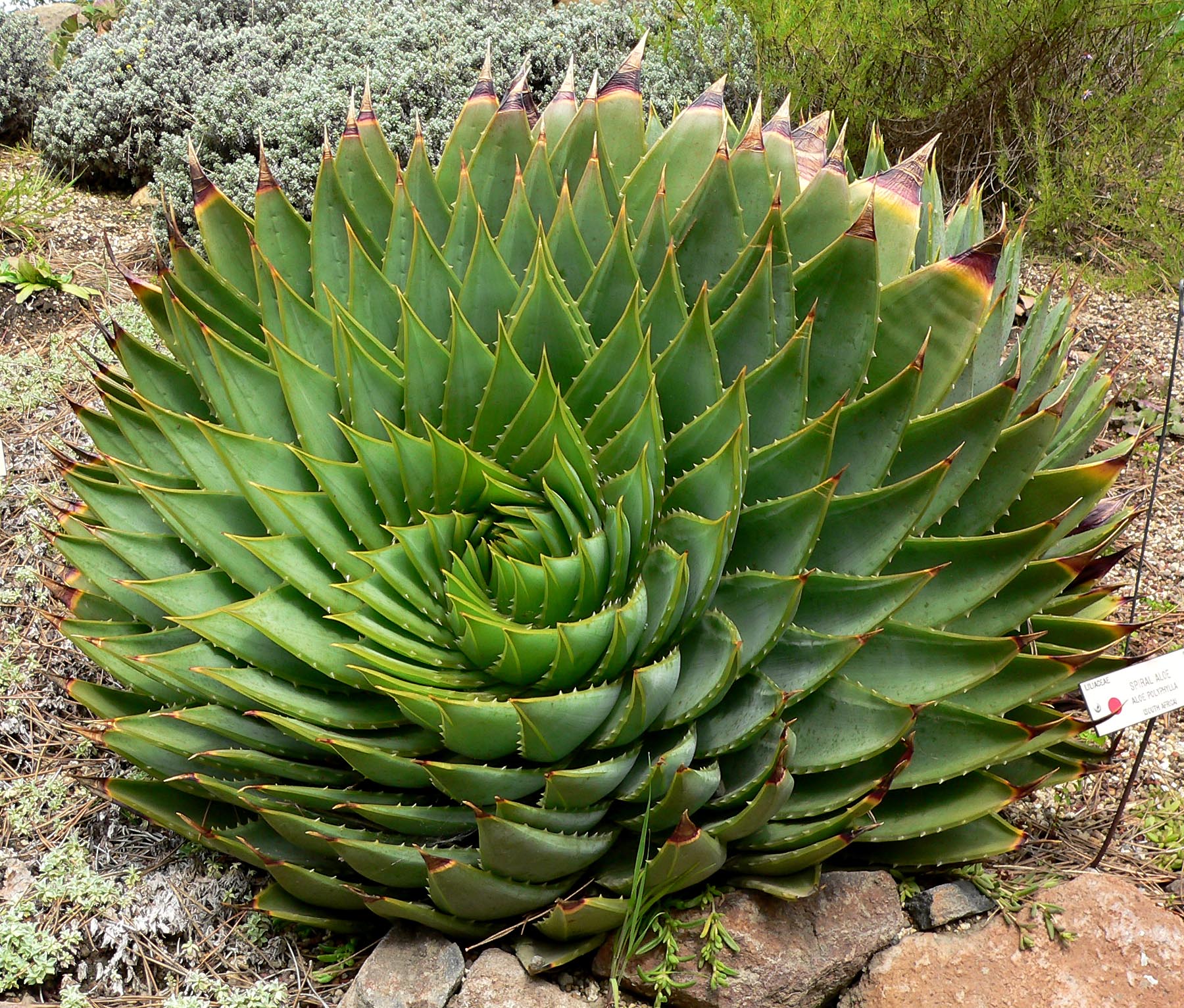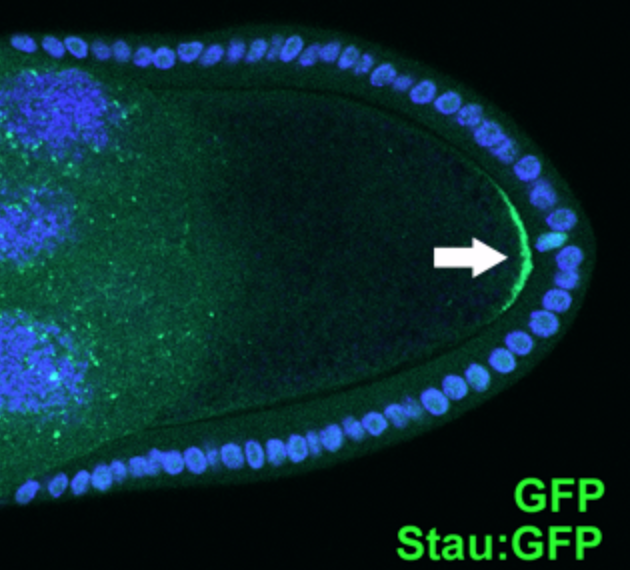|
Primordium
A primordium (; plural: primordia; synonym: anlage) in embryology, is an organ or tissue in its earliest recognizable stage of development. Cells of the primordium are called primordial cells. A primordium is the simplest set of cells capable of triggering growth of the would-be organ and the initial foundation from which an organ is able to grow. In flowering plants, a floral primordium gives rise to a flower. Although it is a frequently used term in plant biology, the word is used in describing the biology of all multicellular organisms (for example: a tooth primordium in animals, a leaf primordium in plants or a sporophore primordium in fungi.) Primordium development in plants Plants produce both leaf and flower primordia cells at the shoot apical meristem (SAM). Primordium development in plants is critical to the proper positioning and development of plant organs and cells. The process of primordium development is intricately regulated by a set of genes that affect the pos ... [...More Info...] [...Related Items...] OR: [Wikipedia] [Google] [Baidu] |
List Of Biological Development Disorders
References Bibliography * Reece JB, Urry LA, Cain ML, Wasserman SA, Minorsky PV, Jackson RB. Campbell Biology (10th ed.). Addison Wesley Longman; 2014. {{DEFAULTSORT:Biological development disorders Lists of diseases Disability-related lists Biological nomenclature Medical terminology Lists of biology lists ... [...More Info...] [...Related Items...] OR: [Wikipedia] [Google] [Baidu] |
Phyllotaxis
In botany, phyllotaxis () or phyllotaxy is the arrangement of leaf, leaves on a plant stem. Phyllotactic spirals form a distinctive class of patterns in nature. Leaf arrangement The basic leaf#Arrangement on the stem, arrangements of leaves on a stem are opposite and alternate (also known as spiral). Leaves may also be Whorl (botany), whorled if several leaves arise, or appear to arise, from the same level (at the same Node (botany), node) on a stem. With an opposite leaf arrangement, two leaves arise from the stem at the same level (at the same Node (botany), node), on opposite sides of the stem. An opposite leaf pair can be thought of as a whorl of two leaves. With an alternate (spiral) pattern, each leaf arises at a different point (node) on the stem. Distichous phyllotaxis, also called "two-ranked leaf arrangement" is a special case of either opposite or alternate leaf arrangement where the leaves on a stem are arranged in two vertical columns on opposite sides of t ... [...More Info...] [...Related Items...] OR: [Wikipedia] [Google] [Baidu] |
Exogenous
In a variety of contexts, exogeny or exogeneity () is the fact of an action or object originating externally. It contrasts with endogeneity or endogeny, the fact of being influenced within a system. Economics In an economic model, an exogenous change is one that comes from outside the model and is unexplained by the model. Such changes of an economic model from outside factors can include the influence of technology, in which this had previously been noted as an exogenous factor, but has rather been noted as a factor that can depict economic forces as a whole. In economic sociology, Project IDEA (Interdisciplinary Dimensions of Economic Analysis) gave notion to understanding the exogenous factors that play a role within economic theory. Developed from the International Social Science Council (ISSC) in the year of 1982, Project IDEA was founded to gather ideas from economists and sociologists in order to conceptualize what economic sociology incorporates, as they have sought ... [...More Info...] [...Related Items...] OR: [Wikipedia] [Google] [Baidu] |
Primordial Phallus
In embryology, the primordial phallus refers to the clitoris of a female or the penis in the male, particularly during fetal development of the urinary and reproductive organs, before sexual differentiation is evident. This is also the case for the immature male analog, the immature glans penis. Image:Primordial_phallus,_low_mag.jpg, Micrograph of the primordial phallus, H&E stain. Image:Primordial_phallus,_intermed._mag.1.jpg, Micrograph of the primordial phallus, H&E stain. See also * Aphallia * Genital tubercle A genital tubercle or phallic tubercle is a body of tissue present in the development of the reproductive system. It forms in the ventral, caudal region of mammalian embryos of both sexes, and eventually develops into a primordial phallus. In the ... Embryology of urogenital system {{developmental-biology-stub ... [...More Info...] [...Related Items...] OR: [Wikipedia] [Google] [Baidu] |
Morphogenesis
Morphogenesis (from the Greek ''morphê'' shape and ''genesis'' creation, literally "the generation of form") is the biological process that causes a cell, tissue or organism to develop its shape. It is one of three fundamental aspects of developmental biology along with the control of tissue growth and patterning of cellular differentiation. The process controls the organized spatial distribution of cells during the embryonic development of an organism. Morphogenesis can take place also in a mature organism, such as in the normal maintenance of tissue by stem cells or in regeneration of tissues after damage. Cancer is an example of highly abnormal and pathological tissue morphogenesis. Morphogenesis also describes the development of unicellular life forms that do not have an embryonic stage in their life cycle. Morphogenesis is essential for the evolution of new forms. Morphogenesis is a mechanical process involving forces that generate mechanical stress, strain, and moveme ... [...More Info...] [...Related Items...] OR: [Wikipedia] [Google] [Baidu] |
Arabidopsis
''Arabidopsis'' (rockcress) is a genus in the family Brassicaceae. They are small flowering plants related to cabbage and mustard. This genus is of great interest since it contains thale cress (''Arabidopsis thaliana''), one of the model organisms used for studying plant biology and the first plant to have its entire genome sequenced. Changes in thale cress are easily observed, making it a very useful model. Status Currently, the genus ''Arabidopsis'' has nine species and a further eight subspecies recognised. This delimitation is quite recent and is based on morphological and molecular phylogenies by O'Kane and Al-Shehbaz and others. Their findings confirm the species formerly included in ''Arabidopsis'' made it polyphyletic. The most recent reclassification moves two species previously placed in ''Cardaminopsis'' and ''Hylandra'' and three species of ''Arabis'' into ''Arabidopsis'', but excludes 50 that have been moved into the new genera '' Beringia, Crucihimalaya, Ianhedge ... [...More Info...] [...Related Items...] OR: [Wikipedia] [Google] [Baidu] |
Plant Morphology
Phytomorphology is the study of the morphology (biology), physical form and external structure of plants.Raven, P. H., R. F. Evert, & S. E. Eichhorn. ''Biology of Plants'', 7th ed., page 9. (New York: W. H. Freeman, 2005). . This is usually considered distinct from plant anatomy, which is the study of the internal Anatomy, structure of plants, especially at the microscopic level. Plant morphology is useful in the visual identification of plants. Recent studies in molecular biology started to investigate the molecular processes involved in determining the conservation and diversification of plant morphologies. In these studies transcriptome conservation patterns were found to mark crucial ontogenetic transitions during the plant life cycle which may result in evolutionary constraints limiting diversification. Scope Plant morphology "represents a study of the development, form, and structure of plants, and, by implication, an attempt to interpret these on the basis of similarit ... [...More Info...] [...Related Items...] OR: [Wikipedia] [Google] [Baidu] |
Dicotyledon
The dicotyledons, also known as dicots (or, more rarely, dicotyls), are one of the two groups into which all the flowering plants (angiosperms) were formerly divided. The name refers to one of the typical characteristics of the group: namely, that the seed has two embryonic leaves or cotyledons. There are around 200,000 species within this group. The other group of flowering plants were called monocotyledons (or monocots), typically each having one cotyledon. Historically, these two groups formed the two divisions of the flowering plants. Largely from the 1990s onwards, molecular phylogenetic research confirmed what had already been suspected: that dicotyledons are not a group made up of all the descendants of a common ancestor (i.e., they are not a monophyletic group). Rather, a number of lineages, such as the magnoliids and groups now collectively known as the basal angiosperms, diverged earlier than the monocots did; in other words, monocots evolved from within the dicot ... [...More Info...] [...Related Items...] OR: [Wikipedia] [Google] [Baidu] |
Cotyledon
A cotyledon (; ; ; , gen. (), ) is a significant part of the embryo within the seed of a plant, and is defined as "the embryonic leaf in seed-bearing plants, one or more of which are the first to appear from a germinating seed." The number of cotyledons present is one characteristic used by botanists to classify the flowering plants (angiosperms). Species with one cotyledon are called monocotyledonous ("monocots"). Plants with two embryonic leaves are termed dicotyledonous ("dicots"). In the case of dicot seedlings whose cotyledons are photosynthetic, the cotyledons are functionally similar to leaves. However, true leaves and cotyledons are developmentally distinct. Cotyledons are formed during embryogenesis, along with the root and shoot meristems, and are therefore present in the seed prior to germination. True leaves, however, are formed post-embryonically (i.e. after germination) from the shoot apical meristem, which is responsible for generating subsequent aerial por ... [...More Info...] [...Related Items...] OR: [Wikipedia] [Google] [Baidu] |
Epidermis (botany)
The epidermis (from the Greek ''ἐπιδερμίς'', meaning "over-skin") is a single layer of cells that covers the leaves, flowers, roots and stems of plants. It forms a boundary between the plant and the external environment. The epidermis serves several functions: it protects against water loss, regulates gas exchange, secretes metabolic compounds, and (especially in roots) absorbs water and mineral nutrients. The epidermis of most leaves shows dorsoventral anatomy: the upper (adaxial) and lower (abaxial) surfaces have somewhat different construction and may serve different functions. Woody stems and some other stem structures such as potato tubers produce a secondary covering called the periderm that replaces the epidermis as the protective covering. Description The epidermis is the outermost cell layer of the primary plant body. In some older works the cells of the leaf epidermis have been regarded as specialized parenchyma cells,Hill, J. Ben; Overholts, Lee O; Popp, H ... [...More Info...] [...Related Items...] OR: [Wikipedia] [Google] [Baidu] |
Meristem
The meristem is a type of tissue found in plants. It consists of undifferentiated cells (meristematic cells) capable of cell division. Cells in the meristem can develop into all the other tissues and organs that occur in plants. These cells continue to divide until a time when they get differentiated and then lose the ability to divide. Differentiated plant cells generally cannot divide or produce cells of a different type. Meristematic cells are undifferentiated or incompletely differentiated. They are totipotent and capable of continued cell division. Division of meristematic cells provides new cells for expansion and differentiation of tissues and the initiation of new organs, providing the basic structure of the plant body. The cells are small, with no or small vacuoles and protoplasm fills the cell completely. The plastids (chloroplasts or chromoplasts), are undifferentiated, but are present in rudimentary form (proplastids). Meristematic cells are packed closely together wi ... [...More Info...] [...Related Items...] OR: [Wikipedia] [Google] [Baidu] |
Cell Polarity
Cell polarity refers to spatial differences in shape, structure, and function within a cell. Almost all cell types exhibit some form of polarity, which enables them to carry out specialized functions. Classical examples of polarized cells are described below, including epithelial cells with apical-basal polarity, neurons in which signals propagate in one direction from dendrites to axons, and migrating cells. Furthermore, cell polarity is important during many types of asymmetric cell division to set up functional asymmetries between daughter cells. Many of the key molecular players implicated in cell polarity are well conserved. For example, in metazoan cells, the PAR-3/PAR-6/aPKC complex plays a fundamental role in cell polarity. While the biochemical details may vary, some of the core principles such as negative and/or positive feedback between different molecules are common and essential to many known polarity systems. Examples of polarized cells Epithelial cells Epitheli ... [...More Info...] [...Related Items...] OR: [Wikipedia] [Google] [Baidu] |





